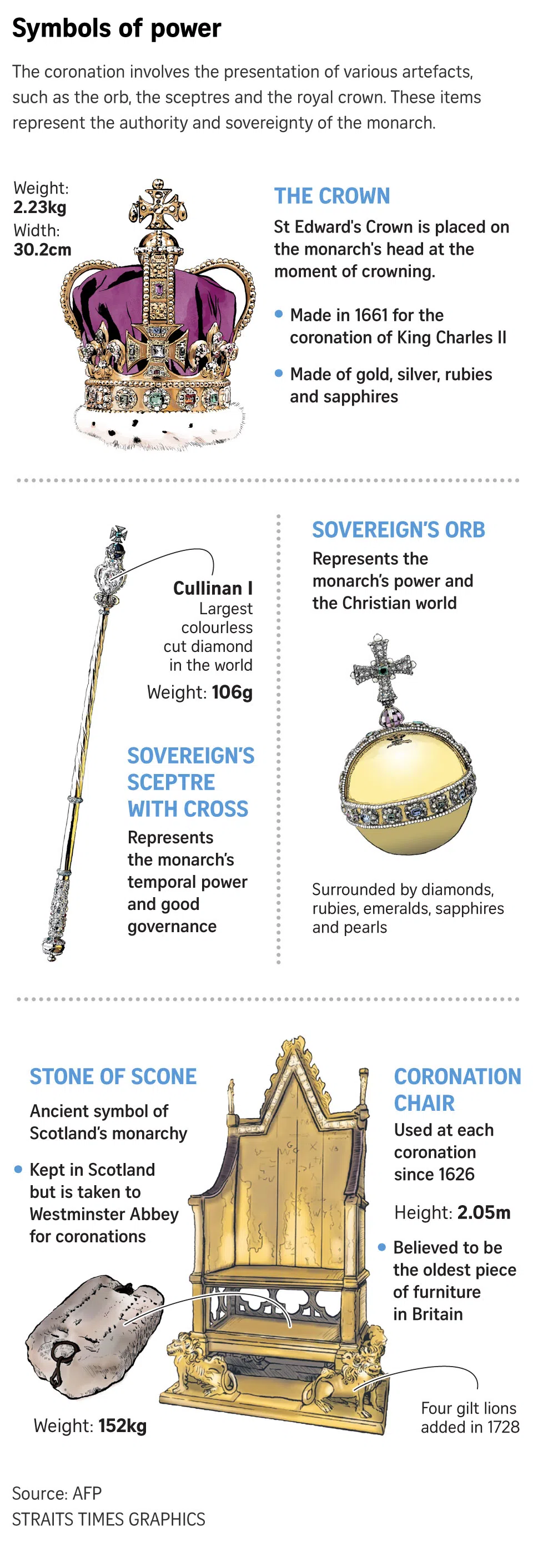King Charles III crowned at London’s Westminster Abbey
Sign up now: Get ST's newsletters delivered to your inbox
Follow topic:
LONDON – King Charles III was anointed and crowned
In front of a congregation of about 100 world leaders and a television audience of millions, Archbishop of Canterbury Justin Welby, the spiritual leader of the Anglican Church, slowly placed the 360-year-old St Edward’s Crown on King Charles’ head as he sat upon a 14th-century throne in Westminster Abbey.
Gun salutes were fired at the Tower of London and across the capital, the nation, in Gibraltar and Bermuda, and on ships at sea.
“God save King Charles. Long live King Charles. May the king live forever,” the congregation at the abbey said after a trumpet fanfare.
During the historic and solemn two-hour service, which dates back to the time of William the Conqueror in 1066, King Charles’ second wife Camilla was also crowned queen.
Both United States President Joe Biden and Chinese President Xi Jinping sent their congratulations to King Charles and Queen Camilla on their coronation.
While rooted in history, the ceremony – televised for only the second time – is also an attempt to present a forward-looking monarchy, with those involved in the service reflecting a more diverse Britain and leaders from all faiths.
With a nation struggling to find its way in the political maelstrom after its exit from the European Union and maintain its standing in a new world order, the monarchy’s supporters say the royal family provides an international draw, a vital diplomatic tool and a means of staying on the world stage.
“No other country could put on such a dazzling display – the processions, the pageantry, the ceremonies and the street parties,” Prime Minister Rishi Sunak said.
Despite Mr Sunak’s enthusiasm, the coronation is taking place amid a cost-of-living crisis and public scepticism, particularly among the young, about the role and relevance of the monarchy.
Saturday’s event was on a smaller scale than that staged for Queen Elizabeth II in 1953, but still sought to be spectacular, featuring an array of historical regalia from golden orbs and bejewelled swords to a sceptre holding the world’s largest colourless cut diamond.
King Charles, 74, automatically succeeded his mother
After the service, King Charles and Queen Camilla, 75, departed in the four-tonne Gold State Coach built for George III, the last king of Britain’s American colonies, for Buckingham Palace in a procession of 4,000 military personnel from 39 nations.
Meanwhile, hundreds of soldiers in bright scarlet uniforms and tall black bearskin hats lined the route along The Mall, the grand boulevard leading to the palace. This was the largest ceremonial event of its kind in Britain since the coronation of King Charles’ mother.
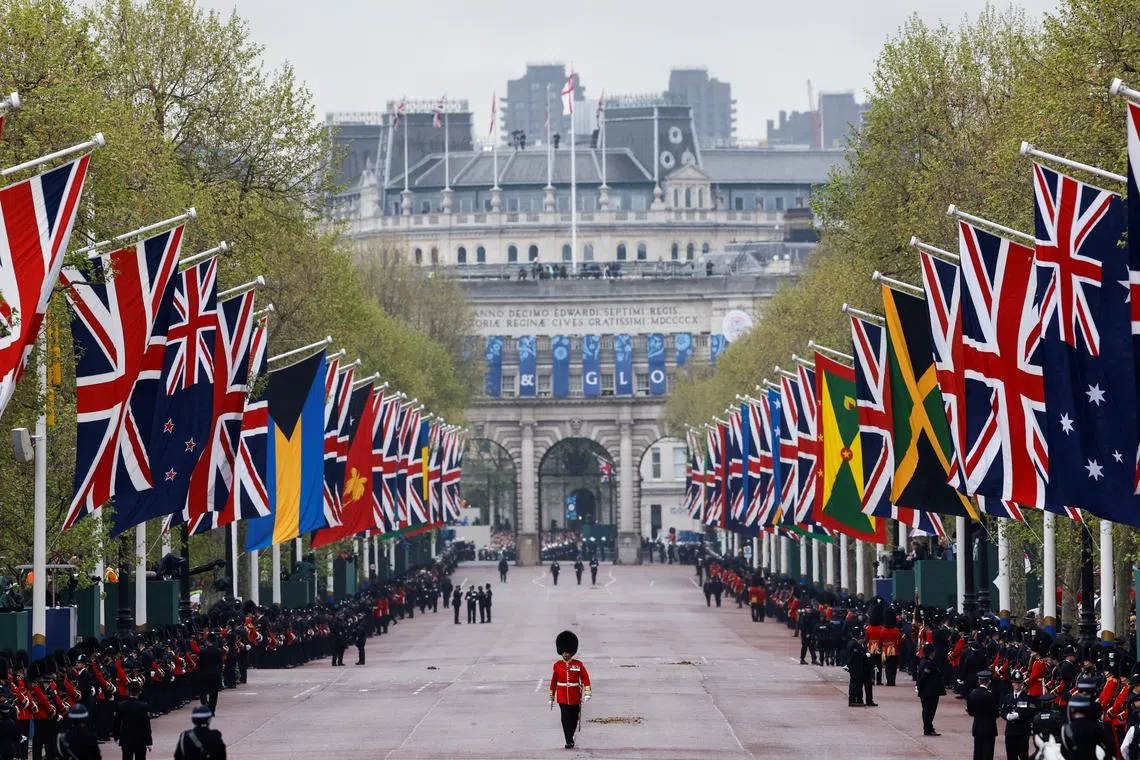
A general view of The Mall ahead of the coronation of Britain’s King Charles and Queen Camilla on May 6, 2023.
PHOTO: REUTERS
Tens of thousands ignored the light rain to gather in a crowd, more than 20 people deep in some places, to watch what some saw as a moment of history.
“When I was a young girl, I was able to watch (the coronation of) Queen Elizabeth on television in Hartford, Connecticut, at a friend’s house because we had no TV,” said retired US teacher Peggy Jane Laver, 79. “So I am thrilled to be here for the coronation in person.”
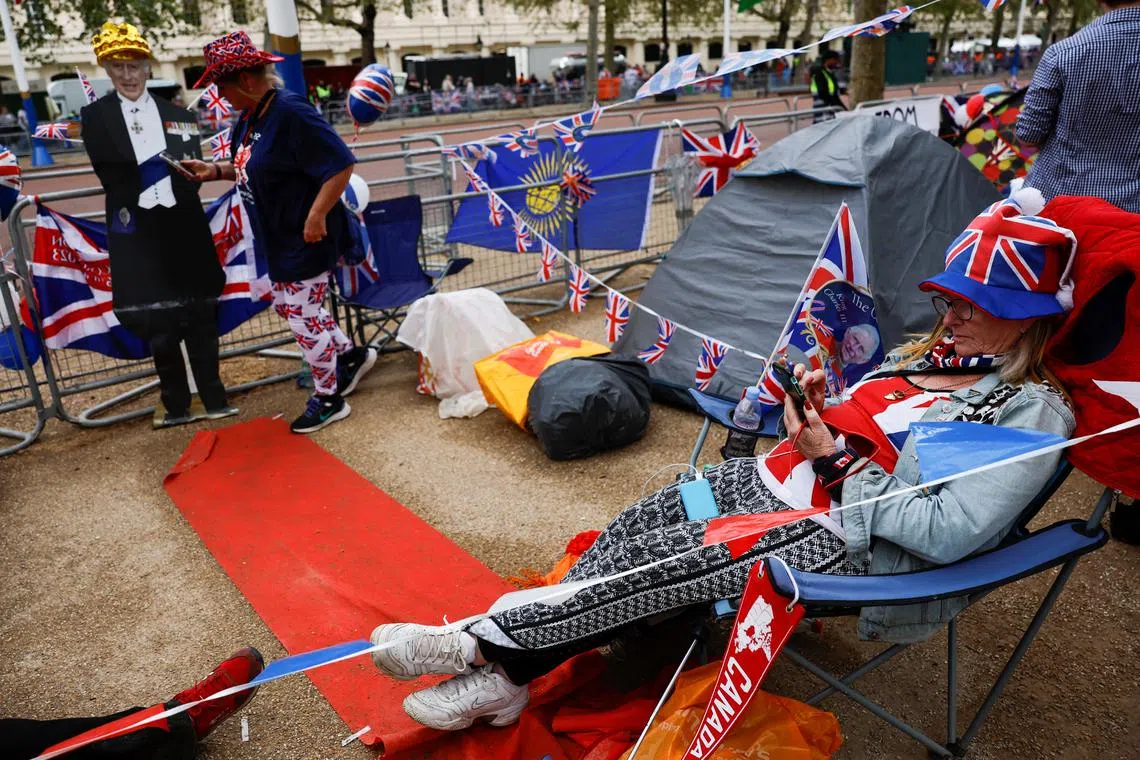
People waiting along The Mall outside Buckingham Palace on May 5.
PHOTO: REUTERS
Great and good
Inside the abbey, bedecked with flowers and flags, politicians and representatives from Commonwealth nations took their seats alongside charity workers and celebrities, including actresses Emma Thompson, Maggie Smith and Judi Dench and US singer Katy Perry.
King Charles looked solemn as he swore oaths to govern justly and uphold the Church of England – of which he is the titular head.
He was then hidden from watching eyes by a screen for the most sacred part of the ceremony, when he was anointed on his hands, head and breast by Archbishop Welby with holy oil consecrated in Jerusalem.
After being presented with symbolic regalia, the archbishop placed the St Edward’s Crown on his head and the congregation cried out “God save the King”.
His eldest son and heir, Prince William, 40, then knelt before his father to pledge his loyalty as his “liege man of life and limb”, both moments greeted by cheers from crowds outside.
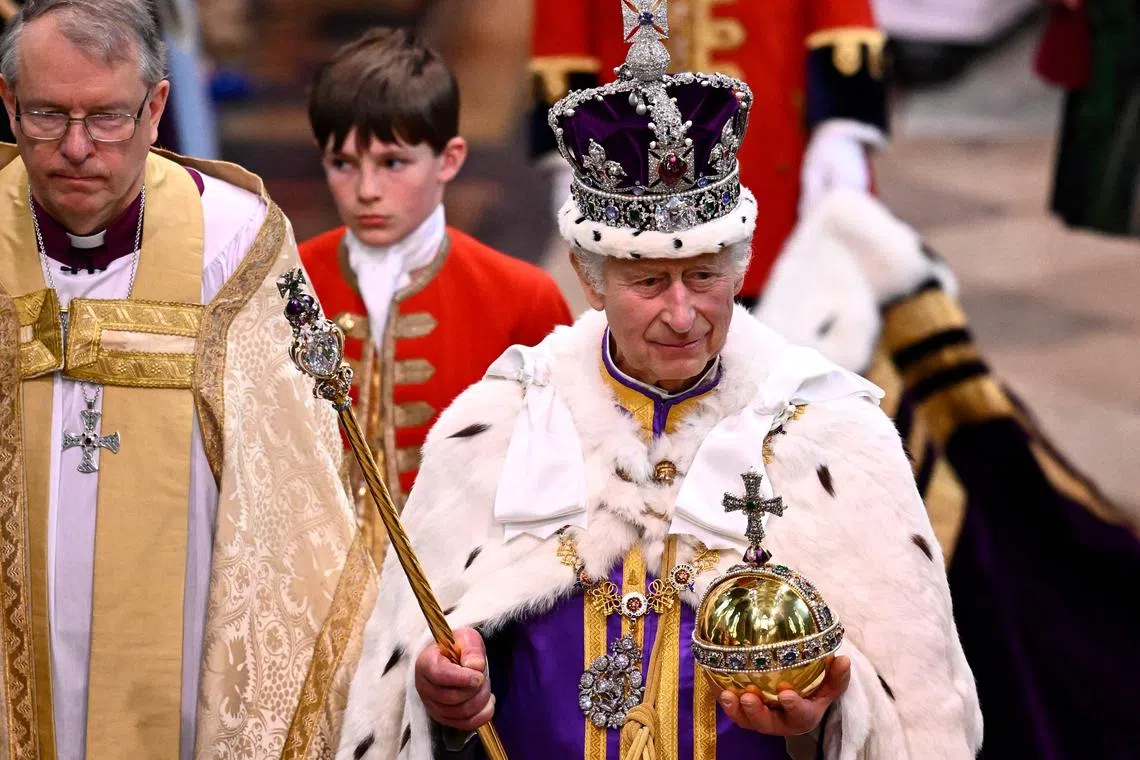
Britain’s King Charles III departing Westminster Abbey after the coronation ceremony on May 6, 2023.
PHOTO: AFP
As he left the abbey, King Charles wore a silk and ermine robe.
Much of the ceremony featured elements that King Charles’ forebears right back to King Edgar in 973 would recognise, officials said.
Handel’s coronation anthem Zadok The Priest was sung as it had been at every coronation since 1727.
But there were new elements, including an anthem composed by Andrew Lloyd Webber, famed for his West End and Broadway theatre shows, and a gospel choir.
King Charles’ grandson, Prince George, and the grandchildren of Queen Camilla acted as pages. However, there was no formal role for either King Charles’ younger son, Prince Harry, after his high-profile falling out with his family, forced to quit royal duties
They sat in the third row behind working members of the royal family.

Page of Honour, Prince George of Wales, following King Charles III out of Westminster Abbey after the coronation ceremony on May 6, 2023.
PHOTO: AFP
Not everyone among the crowds was there to cheer King Charles, with hundreds of republicans booing and waving banners reading “Not My King”.
More than 11,000 police officers were deployed to stamp out any attempted disruption, and campaign group Republic said its leader Graham Smith had been arrested
But they were a minority, with most drawn to the occasion by its unique nature or family connections.
After leaving the abbey, King Charles and Queen Camilla greeted rain-drenched crowds with smiles and waves, in two appearances alongside other British royals from the balcony of Buckingham Palace shortly after their coronations.
However, Prince Harry and Prince Andrew were absent, with the balcony appearances restricted to working royals only.
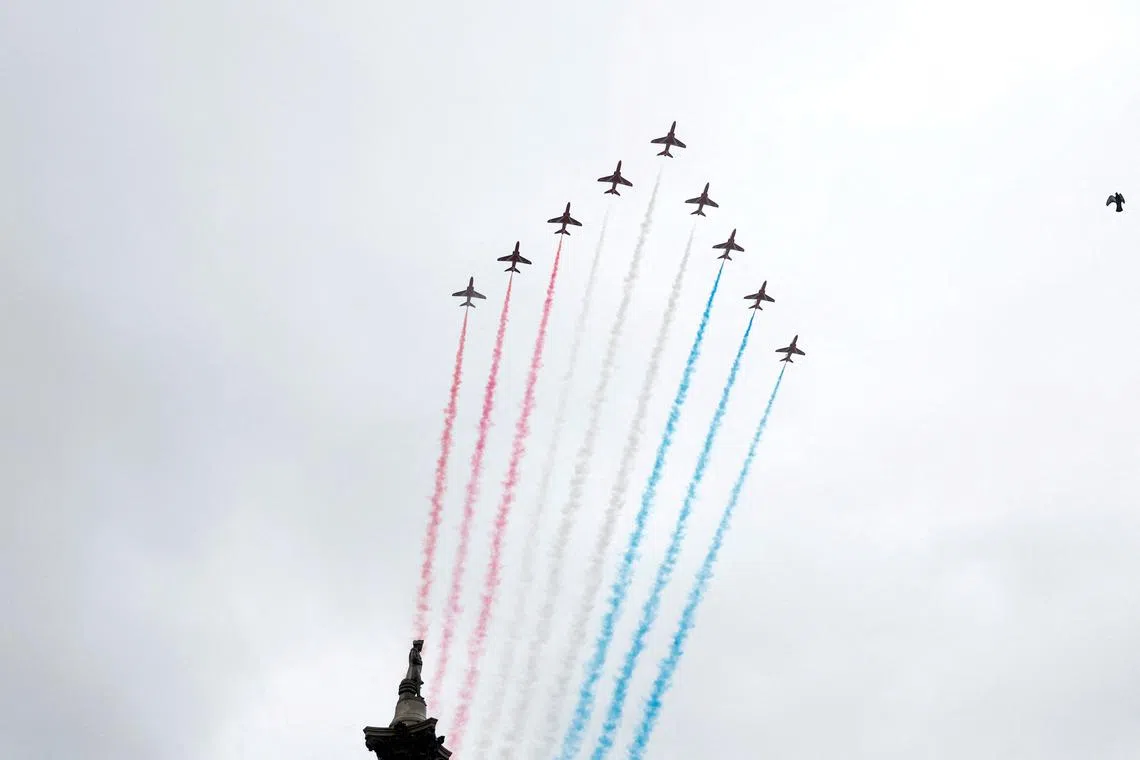
The RAF Red Arrows flying over Nelson’s Column following the coronation of Britain’s King Charles and Queen Camilla on May 6, 2023.
PHOTO: REUTERS
The crowds were treated to a ceremonial fly-past of military aircraft, which had to be pared back due to the wet weather. It featured an assortment of Royal Air Force helicopters, followed by its Red Arrows display team trailing red, white and blue smoke over the palace and central London.
After the display had ended and the royals departed the balcony, they reappeared for a briefer second appearance, again to cheers from the crowds. REUTERS, AFP
